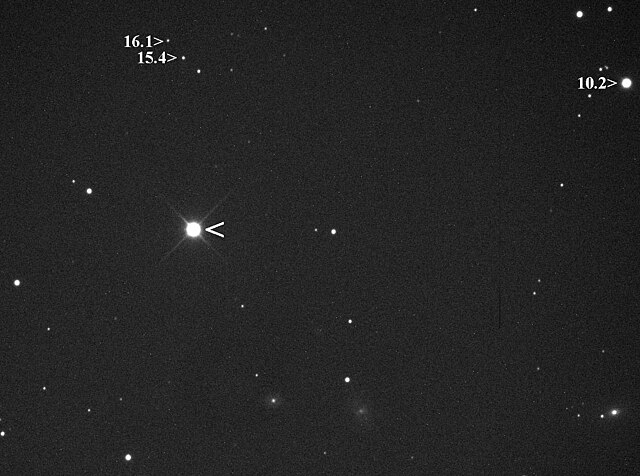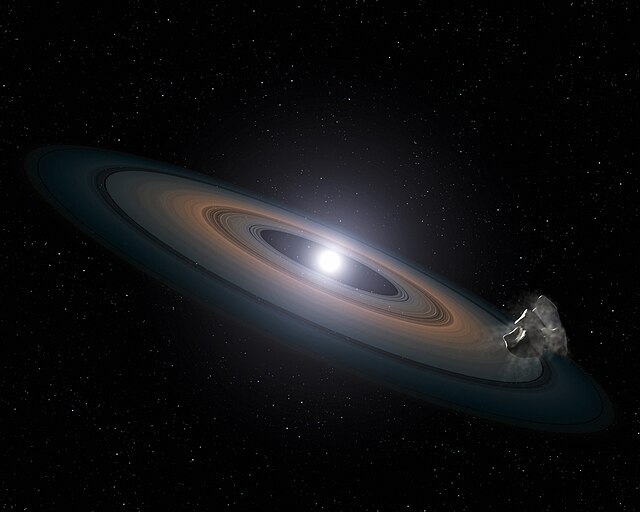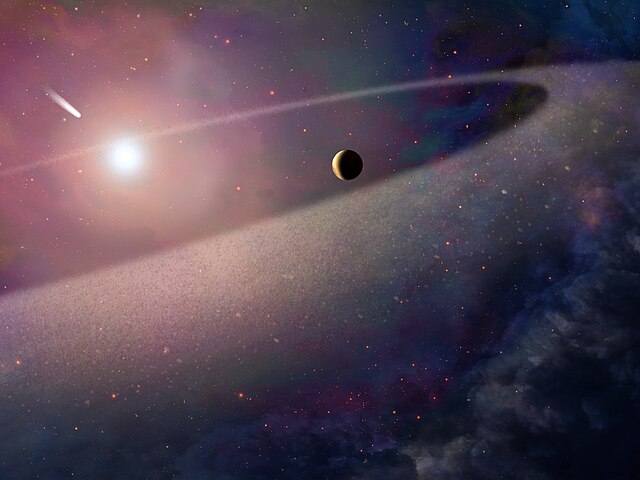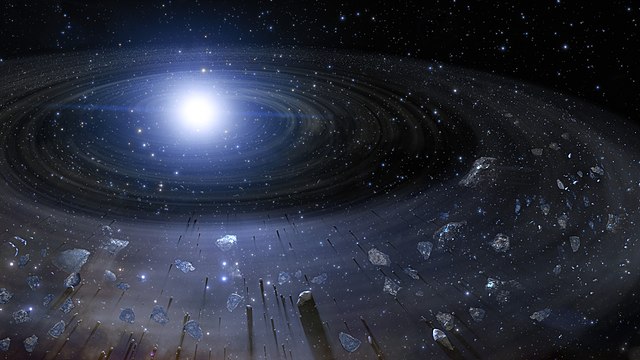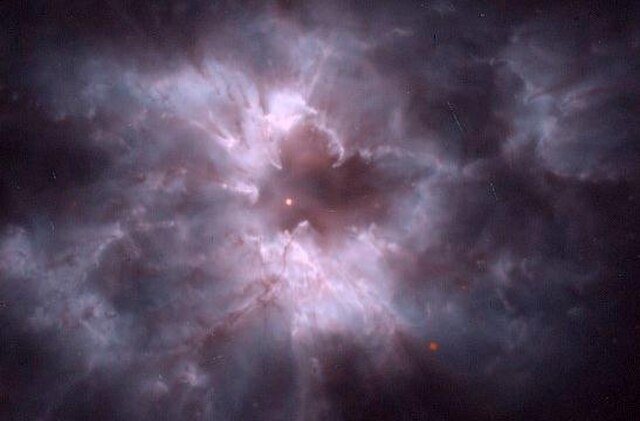A nova is a transient astronomical event that causes the sudden appearance of a bright, apparently "new" star that slowly fades over weeks or months. All observed novae involve white dwarfs in close binary systems, but causes of the dramatic appearance of a nova vary, depending on the circumstances of the two progenitor stars. The main sub-classes of novae are classical novae, recurrent novae (RNe), and dwarf novae. They are all considered to be cataclysmic variable stars.
Artist's conception of a white dwarf, right, accreting hydrogen from the Roche lobe of its larger companion star
Nova Eridani 2009 (apparent magnitude ~8.4)
GK Persei: Nova of 1901
Nova in Andromeda Galaxy
A white dwarf is a stellar core remnant composed mostly of electron-degenerate matter. A white dwarf is very dense: its mass is comparable to the Sun's, while its volume is comparable to Earth's. A white dwarf's low luminosity comes from the emission of residual thermal energy; no fusion takes place in a white dwarf. The nearest known white dwarf is Sirius B, at 8.6 light years, the smaller component of the Sirius binary star. There are currently thought to be eight white dwarfs among the hundred star systems nearest the Sun. The unusual faintness of white dwarfs was first recognized in 1910. The name white dwarf was coined by Willem Luyten in 1922.
Artist's impression of debris around a white dwarf
Comet falling into white dwarf (artist's impression)
Illustration of rocky debris around a white dwarf
Cocoon of a new white dwarf in the centre of NGC 2440


